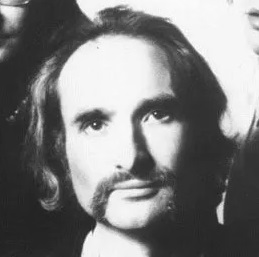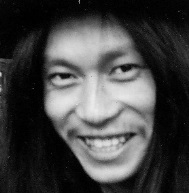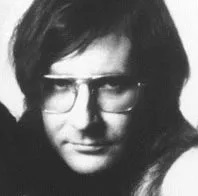|
(Clicka qua per la versione Italiana)
Summary
More than any other band, Can,
formed in Cologne by two classically-trained musicians, bassist Holger Czukay
and pianist Irmin Schmidt (both alumni of Karlheinz Stockhausen), and by Globe Unity's
free-jazz drummer Jaki Liebezeit,
transformed
progressive-rock into a science. By bridging electronic music, jazz music and
rock music, Can accomplished the first organic study on rhythm
and texture. Their hypnotic and glacial instrumental jams straddled the line
between free-jazz, acid-rock and chamber music.
While pursuing an erudite divertissement of
Cage's aleatory music and Schoenberg's atonal music,
while experimenting with the potentialities of electronically-manipulated instruments,
while favoring subdued, fragmented, loose structures
and sinister, menacing atmospheres,
Can became masters of a new electro-acoustic form of music.
Within the German school of the 1970s, Can were the ascetics.
After Monster Movie (1969), a largely improvised and exuberant
kaleidoscope of Pink Floyd-inspired and Velvet Underground-inspired
psychedelic music, Can entered the labyrinthine fray of avantgarde music
with their monumental Tago Mago (1971), a work blinded by Eastern
mysticism and immersed in a jungle of collage techniques and sound effects
(the demonic dissonant concerto of Halleluwah, the oniric caprice of
Aumgn).
After the bleak Ege Bamyasi (1972), that predates the languid, dejected
tones of post-rock and trip-hop, Can dealt another blow to the rules of
harmony with Future Days (1973), their most psychological work.
Instrumental scores such as Bel Air are dense, amorphous, amoebic
lattices of sounds, the musical equivalent of Monet frescoes, that
metabolize jazz, funk, rock, Indian music and dissonance.
Full bio
(Translated from my original Italian text by ChatGPT and Piero Scaruffi)
During the 1970s, Can was the German band that most thoroughly transformed progressive rock into a science. Acting as a bridge between classical music, jazz, and the rock of their time, Can carried out one of the first systematic studies of rhythm and texture. Their hypnotic, glacial instrumental jams were a cross between free-jazz improvisations, acid-rock suites, and chamber music.
Pursuing an intellectual experiment in aleatoric and atonal music, rigorously studying and experimenting with the phonetic possibilities of electronically treated instrumentation, favoring subdued, fragmented, ritualistic tracks, and creating acidic and occult atmospheres, they became undisputed masters—though often academic—of electro-acoustic music. In the German scene, populated by “cosmics” and apocalyptic artists, they stood somewhat apart as ascetics. Can was formed in Cologne by two classically trained musicians, both students of the composer Karlheinz Stockhausen: Holger Czukay, a 30-year-old bassist and sound engineer passionate about minimalism and ethnic music, and Irmin Schmidt, a 31-year-old pianist pursuing a concert career. Together with Jaki Liebezeit, a 30-year-old jazz drummer from the Globe Unity ensemble, guitarist Michael Karoli (just 19, a student of Czukay), and Malcom Mooney, an African-American painter and sculptor who also improvised as a singer, they formed one of the most accomplished collectives of all time. It was Mooney who coined the name Can, replacing the original name Inner Space Productions.
Agilok & Blubbo (Wah Wah, 2009) and
Kamasutra - Vollendung Der Kiebe (Crippled Dick Hot Wax, 2009)
document the 1968 recording by Inner
Space (Irmin Schmidt, Holger Czukay and Jaki Liebezeit).
Can’s first recording took place in June 1968, when the band performed at a modern art exhibition. It would eventually be released on Prehistoric Future (Tago Mago, 1984). Unable to afford a professional studio, Can set up in an abandoned castle and recorded the tracks intended for their first album, Prepared To Meet Thy Pnoom, which instead were only released posthumously on Delay 1968 (Spoon, 1981) alongside outtakes from their first official album. The title is misleading because much of the material was actually recorded in 1969—Butterfly, Nineteen Century Man, and Little Star of Bethlehem have interesting moments, but overall the material is still mediocre, heavily influenced by the psychedelic blues-rock of the era. The band’s first single, Kama Sutra (Metronome, 1968), is credited solely to Schmidt.
Their first album, Monster Movie (Music Factory, 1969 – Mute, 2004), largely improvised in the studio, is a naive and exuberant kaleidoscope of psychedelic music, taking cues from the early masterpieces of Pink Floyd and especially the Velvet Underground. Highlights include the vertiginous Sabbath-like Father Cannot Yell, which is their own little Sister Ray (boogie rhythm, garage-rock guitars, Jim Morrison-style declamation, dizzying distortion), and Yoo Doo Right, a twenty-minute chaotic improvisation combining guitar, bluesy wails, and tribal percussion. However, the other two tracks (Mary Mary So Contrary, an awkward Beatles-style classical ballad, and Outside My Door, a pale imitation of the Thirteenth Floor Elevators) reveal ideas that were still unfocused and underdeveloped.
Soundtracks (Liberty, 1970 – Mute, 2004) is a transitional work, collecting pieces for film and theater. It still features another grotesque tribal dance (Soul Desert) and another “acid” orgy (Mother Sky). The other songs, even when well-crafted (She Brings The Rain, Tango Whiskyman, Don't Turn the Light On), are not much different from the average progressive-rock of the era. The singer-samurai Kenji “Damo” Suzuki, recruited during a concert in Munich, makes his first appearance on a few tracks of this album.
(Original text by Piero Scaruffi)
When Malcom Mooney quit the band, he was replaced for good by
Damon Suzuki, a Japanese vocalist of rare intensity and emotiveness,
a peculiar hybrid of mantric salmody and noh recitation.
The monumental Tago Mago (UA, 1971 - Mute, 2004), permeated with
mystical overtones, incorporated avantgarde techniques
(notably collage and sound effects)
within the structures of rock music.
Paperhouse opens the album with an agonizing blues, but at the first
opportunity the guitar intones a cosmic psalm over tribal drumming, and then,
teased by sinister whispers, unleashes a raga-like whirwind of rapidly
strummed metallic tones.
Suzuki's psychodrama in Mushroom is set in a rarefied atmosphere
of skitting drums, booming bass and atonal guitar,
a cold dub-jazz doodling for alien lounges.
Suzuki's voice is centerstage again in Oh Yeah, except that the
context is the exact opposite, with a steady syncopated gallop filling the
void and an unstable crescendo of dissonance and blues guitar.
The eleven-minute Peking O starts out as another vehicle for
Suzuki's psychological handicaps but instead mutates into a Dadaistic essay
on how to deconstruct dance music: a Brazialian rhythm that implodes into a
supersonic drilling industrial beat against the backdrop of a limping jazz
piano. The inconsequential music ends in an orgy of random drones, theatrical
vocals and metronomic drums.
The closer, Bring Me Coffee Or Tea,
basically a delirious hare-krishna chant for loose rock quintet, pretends
to link the album to the contemporary fad of Eastern-tinged psychedelia.
As innovative as these compositions were, they paled compared with the two
towering masterpieces of the album.
The 18-minute Halleluwah creates an Amon Duul II-style rhythmic bacchanal
at a totally different level, with torrid funk music scoured by
Suzuki's jungle chanting. Slowly, the African component of the rhythm takes
over and obliterates everything else. After five minutes the piece restarts
in a purely instrumental form with a new funky pattern as the habitat
for a population of both instrumental, vocal and artificial noises.
Soon the most petulant guitar leads a jazzy improvisation
punctuated by irregular drumming and looping keyboards.
Suzuki resurrects at the very end, engaging the bluesy guitar in a playful
duet of inarticulate accidents.
The 17-minute Aumgn begins in psychedelic lands of floating tones
and distorted instruments, but soon the sounds take off in alien orbits
and the piece begins to disintegrate into musique concrete and
Dadaistic noise. When the voice emerges, it is merely a distorted mantric chant
that blends with the fluid amalgam of free tones.
The percussion instruments are initially employed not to pace the flow
but to add hues and shadings to the soundpainting process.
Towards the end, though, it is the drumming that creates the dramatic
tension that was missing. The drums take the role of the melody in guiding
the music towards a narrative and emotional ending.
Despite the electric guitar, the drums and the vocals, much of this double
album is avantgarde and jazz music. Its relationship to rock music of the
1960s is, ultimately, limited to the instrumentation.
With just one album, Can pioneered several genres that would become popular
in the 1990s: industrial music, noise-rock, trip-hop and post-rock.
(Translated from my original Italian text by ChatGPT and Piero Scaruffi)
The next album, Ege Bamyasi (1972 – Mute, 2004), is a dark and oppressive collection of concise tracks, featuring electronic cacophony gags like Soup or neurotic ragas like Spoon (one of the first songs to use a “drum machine”). With this record, however, Can seem to move toward a degraded form of the languid, funky easy-listening of the era (Vitamin C, Sing Swan Song). With this album, Can finally acknowledge the electronic experiments of the rest of the German rock scene.
Having set their sound in a more professional way (and leaving behind youthful rough edges), the band reached another creative peak with Future Days (1973 – Spoon, 2005). With this album, Can’s sound changes radically, almost inventing a new genre of psychological music. The instrumental passages are sometimes amorphous but coherent, like Monet frescoes or documentaries of amoebas. The instrumental Spray swallows jazz, funk, tribalism, boogie, and subtle dissonances in one gulp, producing a coldly impermeable effect, as if the suites of Iron Butterfly, Colosseum, or Traffic had undergone a process of rarefaction, culminating in an Indian-like psalm. Bel Air, the opus magnum of the second side, weaves a dense and chaotic harmony (primitivist vocalizations, keyboards intoning oriental melodies, feverish percussion, demonic electronics) that gradually unravels but never loses its identity. After a bucolic interlude sampling nature sounds, the suite resumes with a more mystical tone and launches into a boogie-paced jam reminiscent of the Grateful Dead or the Allman Brothers of the era, but intertwined with a “dervish” guitar. The drum propulsion lifts the track once again, while the guitar spirals into jazz territories à la John McLaughlin, and the electronics grow increasingly solemn.
Not everything shines: the title track is a mosaic of casual recitation and reverb effects over African percussion rhythms, and Moonshake is an atmospheric pseudo-Brazilian pop song with a “motorik” beat, another sign of their morbid attraction to lounge music. Yet the whole remains imposing.
The sophistication of the tracks is almost excessive: every sound is calculated, the performance methodical, the production meticulous. Karoli, having long abandoned the modal scales of acid rock, draws precious and crystalline figures indebted to funk, while Schmidt colors his improvisations originally, drawing equally from jazz-rock and electronics.
Schmidt is a keyboardist as cold as he is precise, a sort of sound surgeon. Liebezeit proves to be one of the greatest drummers of his era, perhaps the only one in rock history difficult to distinguish from a machine.
Doko E contains unreleased recordings from the same sessions
of Future Days.
Suzuki, who had married a Jehovah’s Witness, left the band, which thus became a quartet (Czukay, Schmidt, Liebezeit, Karoli). Soon Over Babaluma (1974), their most minimalist work, contains the surreal hypnosis of Dizzy Dizzy (with violin in the foreground and an almost reggae rhythm, nearly a parody of the Penguin Café Orchestra) and a precursor to ambient techno, Quantum Physics (alien frequencies running wild, percussion buzzing like Indian tablas, long-resonating triangle strikes, muffled drum beats, and a finale where the sound is sucked into a black hole à la Klaus Schulze). The other tracks, though born from suggestive ideas, are uncertain. Splash launches into a frantic salsa overlaid with a free-jazz jam (guitar, bass, saxophone) and a violin drone. A feverish Caribbean rhythm underlies Chain Reaction, over which another loquacious guitar solo soars (toward the end it almost recalls the Doors’ blues from their crisis period). A deplorable Come Sta La Luna begins to show the group’s loss of clarity. But it is above all the vocals that are the weak point of the album, which in fact tries to “sing” as little as possible.
Landed (Virgin, 1975) was their most professional album in terms of production. Despite some classy tracks (the 13-minute instrumental Unfinished, Red Hot Indians), it remains a minor work. Flow Motion (Harvest, 1976) shows the influence of reggae production techniques and includes their only hit, I Want More. Saw Delight (Harvest, 1977) incorporates world music in collage form with Animal Waves and shows an even more pronounced influence of reggae.
Czukay, Schmidt, Liebezeit, Karoli, and the original vocalist Mooney returned with the album Rite Time (Mercury, 1989) to the heights of their Teutonic blend of jazz-rock (Below This Level), blues (Movin' Right Along), electronics (Like A New Child), and funk (Without Law Man), leaving their spiritual testament in In the Distance Lies the Future.
(Original text by Piero Scaruffi)
Cannibalism (Spoon, 1984) is a double anthology of
1969-74, and was followed by
Cannibalism No. 2 (Spoon, 1992) and
Cannibalism No. 3 (Spoon, 1994).
Limited Edition (UA, 1973) contains unreleased Can tracks, and more will
surface on Unlimited Edition (Harvest, 1976 - Spoon, 2005).
More live performances surfaced on Can Box (1999).
Radio Waves (Sonic Platten, 1997) contains rarities,
and notably the 35-minute Up The Bakerloo Line With Anne.
Liebezeit, Karoli and Schmidt are the only original members left on
Out Of Reach (Spoon, 1978).
Inner Space (Laser, 1979), also known as Can, contains two
eight-minute pieces, All Gates Open and Safe, closer in style to
latter-day Tangerine Dream than to early Can, and little else
worth mentioning.
Outside Can't main albums, Holger Czukay has been the
most active Can member.
Jaki Liebezeit formed the Phantomband, which released
Phantomband (Sky, 1980), Freedom Speech (Sky, 1981) and
Nowhere (Spoon, 1984)
Irmin Schmidt's solo works include:
Toy Planet (Spoon, 1981),
Musk At Dusk (Spoon, 1987),
Impossible Holidays (Spoon, 1991),
the opera Gormenghast (Spoon, 1999),
Masters Of Confusion (Spoon, 2001), a collaboration with drum'n'bass
artist Kumo, and several volumes of Filmmusik, starting from 1980 and
summarized on Soundtracks (Spoon, 1994).
Karoli resurfaced during the new wave with the Bit's of drummer Ulrich "Ullip" Putsch that recorded only an EP, Bit's (1982), later included in the compilation Home Run (2003), closer in spirit to the
"no wave" of Contortions and DNA but with Can's passion for hypnotic repetition.
Damo Suzuki formed the Network in 1987, by gathering
Jaki Liebezeit, Guru Guru's drummer Mani Neumeier, keyboardist Matthias Keul and a guitarist.
The seven-CD box-set Promise (Network, 1999) collects the live
performances of the group, mostly epic-length improvisations, recorded between
1987 and 1990.
Vernissage (Network, 1998) is a live performance from 1990 of the same
line-up.
Tokyo On Air West 30 April (1997) and
Tokyo On Air West 2 May (1997) and document a Japanese tour with Karoli,
Keul, Neumeier and Mandjau Fati on bass.
Seattle (Inner Space, 1999) is a live performance from 1998 that still
features Karoli.
Odyssey (Network 2000) does not include any former Can member.
Karoli died in november 2001 at the age of 53.
The double-disc Abhayamudra (Strange Attractors, 2004) compiles some live improvised sessions between Cul De Sac and Can's vocalist Damo Suzuki.
The Lost Tapes (Mute, 2012) is a box-set of unreleased studio, soundtrack and live material. The only piece that is worth the price of the album is
the psychedelic 12-minute Dead Pigeon Suite.
Jaki Liebezeit died in 2017.
Damo Suzuki died in 2023.
|








